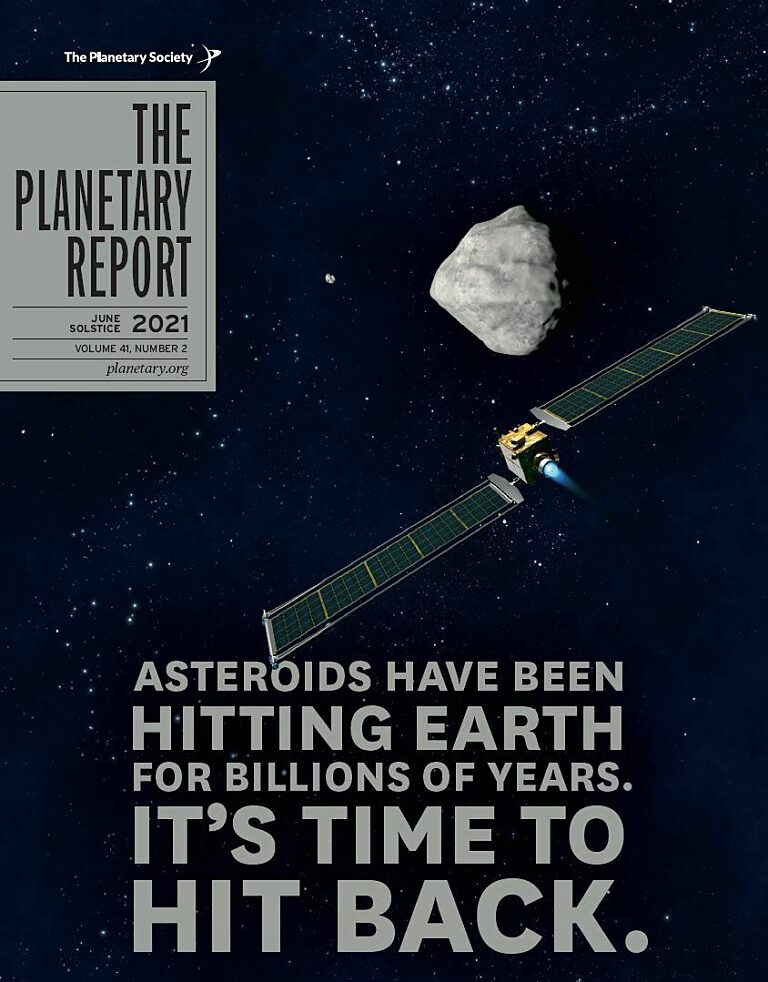Risky business: will the world rise to the challenge of asteroid defense?
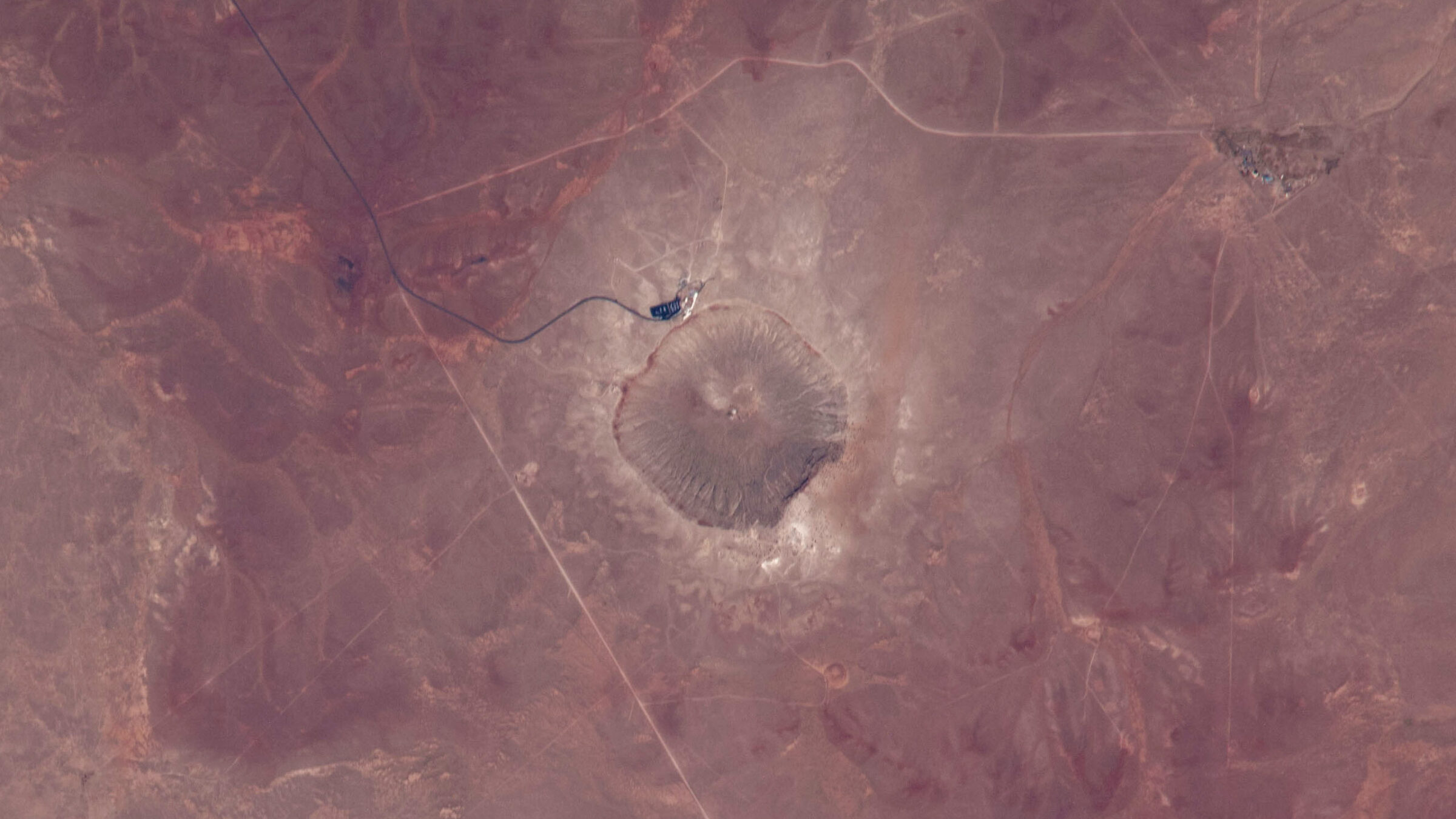
Earth has been stuck in a cosmic shooting gallery since its formation.
About 4 billion years ago, the orbits of Jupiter and Saturn shifted, barreling through a dense ring of asteroids and comets left over from the solar system’s formation. Some of these ancient worlds slammed into Earth, possibly carrying water and organic materials here that kick-started life.
But what the universe giveth, it can taketh away. Sixty-six million years ago—long after life had taken hold—a 10-kilometer-wide (6.2-mile-wide) asteroid struck Earth, snuffing out the dinosaurs.
The dinosaurs didn’t have a space program. Fortunately, we do.
This November, NASA will launch the world’s first mission to test a method of deflecting an asteroid. DART, short for Double Asteroid Redirection Test, will spend a year cruising through space to asteroid Didymos and its small moon, Dimorphos. (Neither are on course to hit Earth; this is only a test.)
As it approaches Didymos and Dimorphos in September 2022, DART will lock onto Dimorphos. The washing-machine-sized spacecraft won’t slow down, intentionally smashing into Dimorphos at a speed of 6.6 kilometers (4.1 miles) per second.
There won’t be much of the probe left, says Andy Rivkin, a planetary astronomer and DART investigation lead at the Johns Hopkins University Applied Physics Laboratory in Baltimore, Maryland.
“Psychologically, we have been trying to remind ourselves that DART is a tool we’re using to get some data, to do a job,” Rivkin tells The Planetary Society. “We try not to anthropomorphize it too much, in the way people don’t have a favorite nail or screw.”
DART’s impact will be akin to detonating several tons of TNT, creating a crater as wide as a bowling lane. Dimorphos, which weighs almost 5 million metric tons, will absorb the blow like a lumbering giant, wobbling enough to drop its orbital period around Didymos from about 11.9 to 11.8 hours—a difference of roughly 10 minutes.
But that will be enough. From Earth, Dimorphos and Didymos look like a single point of light that brightens and dims at regular intervals as Dimorphos passes behind and in front of Didymos. Astronomers watching through telescopes will see that interval change. While Dimorphos and Didymos aren’t on course to hit Earth, DART will confirm that we have the capability to change the trajectory of an asteroid if we need to do so.
The mission is a turning point for the world’s nascent planetary defense efforts, but there is still much work to be done. Tens of thousands of city-killer-sized asteroids must still be found, tracked, and studied. Future missions need to test other methods of deflecting space rocks. And countries must work together to coordinate global response strategies if we find an asteroid on course to hit Earth.
“This is part of a much bigger strategy— understanding what’s out there and making a plan,” Rivkin says.
Vermin of the Sky
Our brains like to categorize things. This has historically been a problem for asteroids, which defy simple categorization.
Astronomer Giuseppe Piazzi discovered the first asteroid, Ceres, by accident in 1801 while making a star map. Ceres and three other asteroids discovered around the same time were often called planets until the mid-1800s, when astronomers began to discover a flood of similar small worlds between Mars and Jupiter.
So, what should these worlds be called? Astronomers veered between planets, small planets, minor planets, and asteroids—the latter an imprecise Greek word that means “star-like.” The debate on what to call small worlds like Pluto has arguably raged for more than 170 years.
In 1898, astronomers discovered Eros, an asteroid that veers unnervingly close to Earth. Like its predecessors, this near-Earth asteroid was initially an outlier before scientists learned there were many more like it.
The early to mid-20th century was a boon for learning our place in space, as astronomers realized that the spiral smudges of light in their telescopes were entire galaxies separate from our own, set in an ever-expanding, mind-bogglingly large universe.
Asteroids, meanwhile, got downgraded to party-crasher status. They frequently showed up as streaks of light that ruined long-exposure photographs of gorgeous deep-sky objects. This earned them an infamous nickname that you can imagine being uttered in tandem with a shaking fist: “vermin of the sky.”
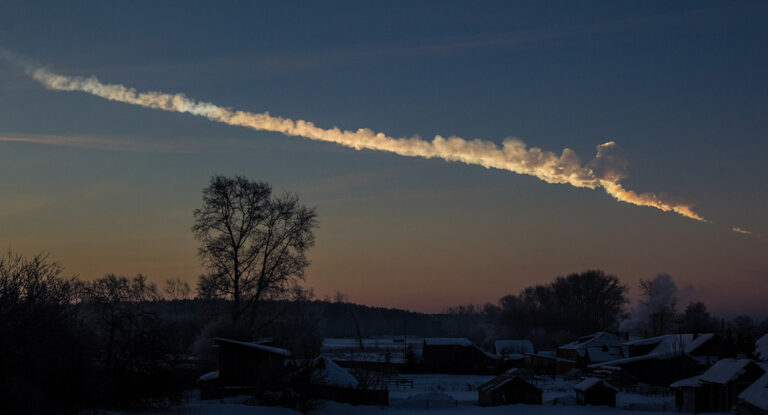
It Can Happen Here
You don’t have to look far to see the impact—no pun intended—that asteroids can have on other worlds. All it takes is a pair of binoculars to get a close-up look at the Moon’s craters, formed over time mostly by volcanic eruptions and asteroid impacts.
Nevertheless, it has been an uphill battle for scientists to show that asteroids have previously wreaked large-scale destruction on our own planet and that they can still do so today.
“We got laughed at a lot,” says Lindley Johnson, the head of NASA’s planetary defense program, remembering the reactions he and his colleagues received just a couple decades ago. “People didn’t believe it was a real threat that anybody needed to worry about.”
About a three-hour drive northeast from Phoenix, Arizona lies a giant hole in the desert named Barringer Crater that’s a kilometer wide and 170 meters (560 feet) deep. In 1960, planetary scientist Gene Shoemaker and his colleagues found a mineral called coesite at Barringer.
Coesite only forms under high pressure—the kind of pressure you’d expect from an asteroid impact. Shoemaker’s discovery was clear evidence that Barringer was created by something smashing into Earth, incinerating plants and animals up to a couple dozen kilometers away in all directions.
Twenty years later, a team of researchers including the father-son duo Luis and Walter Alvarez announced they’d found high concentrations of iridium in the worldwide band of rock that marks the end of the Cretaceous period—the reign of the dinosaurs—66 million years ago. Levels of iridium that high don’t show up naturally on Earth, but they do in meteorites that fall from the sky.
By 1990, scientists had found a candidate dinosaur-killer crater at the tip of Mexico’s Yucatán Peninsula. Half of the massive indentation, which measures 150 kilometers (93 miles) across, lies buried beneath the Gulf of Mexico.
It took two decades for most of the scientific community to agree that the Yucatán crater was caused by the asteroid that did in the dinosaurs. Among the groups that helped collect evidence was The Planetary Society, which led a series of expeditions to Belize to study debris from the impact. Society members also collected rock samples in Italy corresponding to the same time period.
Today, most of the public seems convinced that asteroid impacts should be taken seriously. Opinion polls consistently show that most U.S. residents believe defending our planet should be one of NASA’s top priorities.
Johnson isn’t surprised. “Who else are they going to turn to if such a threat appeared other than their space program?” he says.
The Great Dying
The extinction of the dinosaurs 66 million years ago is just one of five known major extinction events. The largest occurred about 250 million years ago, when a whopping 96 percent of all life on Earth died. Scientists aren’t sure what caused the event, known as “the Great Dying.” In 2017, three scientists, including Max Rocca, who has received funding from The Planetary Society to look for and study Earth impacts, published a peer-reviewed paper showing evidence for a 250-kilometer-wide (155-mile-wide) crater near the Falkland Islands that may be linked to the event. Learn more at planetary.org/falklands.
The Risk Is Not Zero
Looking at NASA’s budget, you wouldn’t infer that the public feels so strongly about stopping dangerous asteroids. Less than 1% of the agency’s $23 billion budget for 2021 went toward planetary defense, and that’s almost 40 times more than what the agency spent on asteroid defense 15 years ago.
In 2005, Congress passed a law directing NASA to find at least 90% of all near-Earth objects—that is, objects that come close to Earth orbit—that are 140 meters (459 feet) or larger.
There was just one problem: Congress didn’t give the space agency the money it needed to fulfill the goal, and NASA didn’t request it either. The original 2020 deadline came and went, and today, fewer than 40% of asteroids that size and larger have been found.
It doesn’t even take a 140-meter-wide asteroid to cause serious damage. According to the Torino Scale, a tool that ranks the severity of asteroid threats, just a 20-meter-wide object can cause “localized destruction for an impact over land or possibly a tsunami if close offshore.” The scale notes these events can occur as frequently as every 50 years.
Fortunately, Earth is vast, with two-thirds of it covered in water. The risk of an asteroid scoring a direct hit on a major metropolitan area is low but not zero.
Russia, with its large land mass, often bears the brunt of small asteroid impacts. In 1908, an object roughly 50 to 80 meters wide (160 to 260 feet wide) exploded over a remote region of Siberia, flattening 2,000 square kilometers (770 square miles) of forest. More recently, in 2013, a 20-meter-wide asteroid exploded near the Russian city of Chelyabinsk, damaging buildings and sending more than 100 people to area hospitals.
The good news is that with missions like DART, we can theoretically stop asteroids from impacting Earth. But first, we have to find them in time.


The Asteroid Hunters
Until the early 1970s, most asteroid discoveries were still being made by telescopic sky surveys dedicated to cataloging stars, galaxies, and other deep-sky objects—a tradition started by Giuseppe Piazzi when he stumbled upon Ceres in 1801.
“Asteroids and comets were not considered cutting edge,” says Linda Schweizer, an astronomer and the author of Cosmic Odyssey: How Intrepid Astronomers at Palomar Observatory Changed Our View of the Universe. “They were a byproduct of sky surveys, not the target.”
That changed around 1973 when Gene Shoemaker and planetary scientist Eleanor Helin started a search for near-Earth objects based out of Palomar Observatory in Southern California.
Helin would go on to become a prolific asteroid hunter, discovering 515 objects and codiscovering 388 more from 1973 to 1995. She cobbled together funding from various sources to secure asteroid-hunting time on telescopes around the world. Among her donors are members of The Planetary Society, who began funding her work in 1982.
“I certainly don’t want to frighten anyone or cause great alarm,” Helin told the Los Angeles Times in 1993. “It’s not that I’m rattling any cage saying, ‘Tomorrow we will die.’ But we have been impacted before, and we will be impacted again. We need to be prepared.”
Following the death of Gene Shoemaker in 1997, The Planetary Society established a grant program in his name to fund astronomers who find, track, and study near-Earth asteroids. Since then, the Society has awarded 62 grants to observers in 19 countries on six continents.
Initially, the program was focused on discovery; today, that’s mostly the domain of professional sky surveys. But because survey telescopes are focused on sweeping the sky, they can’t always stop to study newly discovered objects.
It can take dozens of observations of a newly discovered asteroid to determine whether or not it will hit Earth. Those follow-ups often fall to a tightly knit community of amateur and professional astronomers around the world, including the Society’s Shoemaker grant winners.
“One thing I have learned from working in this field is that it’s a team effort,” says Amy Mainzer, a planetary scientist and professor at the University of Arizona. “If you play a team sport like soccer, you know this. The ball is moving, so you need a team—a network of people.”
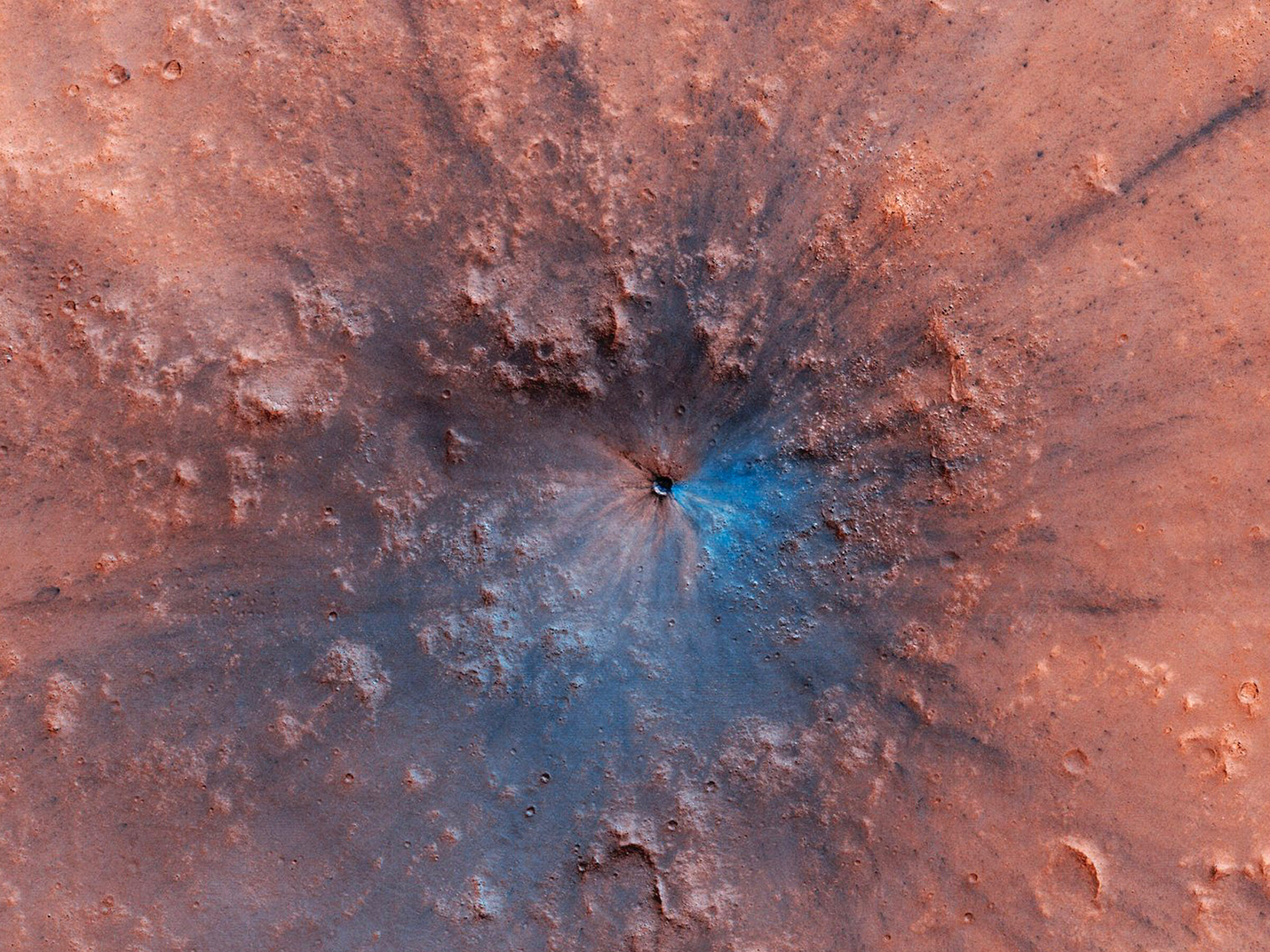
Space Telescopes
Mainzer knows a thing or two about planetary defense. Since 2005, she’s been trying to get NASA to launch a space telescope that would specifically hunt for near-Earth objects.
Ground-based telescopes can only search for asteroids at night, which leaves our planet vulnerable to any flying at us from the Sun’s direction. Furthermore, asteroids are often as dark as charcoal briquettes, reflecting very little light against the blackness of space.
A space telescope can overcome the charcoal briquette problem by observing in infrared light, where the heat asteroids absorb from the Sun makes them easy to pick out against the cold backdrop of space.
To solve the sunlight problem, you have to place your telescope between Earth and the Sun, where it can look at the region of space ahead of and behind our planet’s orbital path.
Mainzer’s telescope, which was originally named NEOCam and is now known as NEO Surveyor, will do both of those things. In 2020, after years of congressional prodding from groups including The Planetary Society, NASA finally moved the mission into its formulation phase.
NEO Surveyor could be ready to fly as soon as 2026, but NASA has been reluctant to request funding for the mission, citing other science priorities and the COVID-19 pandemic. Earlier this year, Congress asked NASA to lay out a plan for a mid-2020s launch, signaling an intent to support the program. U.S. Planetary Society members pressed their congressional representatives to fund the mission during the Society’s annual Day of Action in March.
Until NEO Surveyor launches, NASA’s only space-based asteroid hunter is a telescope that wasn’t specifically designed for the job in the first place.
WISE, the Wide-field Infrared Survey Explorer, launched in 2009 on a mission to scan the sky for nearby cool stars and faraway bright galaxies. The scientists behind WISE figured its infrared detectors would allow it to find asteroids as well, but there was no computer pipeline in place to process the telescope’s images specifically for that purpose.
So, Mainzer and other team members built one. “It turned out to be a fun challenge,” she says.
After WISE’s supply of frozen hydrogen that kept its instruments cool ran out as expected in 2010, NASA deactivated the telescope and left it adrift in Earth orbit. Three years later, the agency revived it as an asteroid hunter called NEOWISE thanks to the data processing work done by Mainzer and her colleagues.
As of early 2021, NEOWISE has surveyed the entire sky 15 times, observing roughly 40,000 solar system objects including 1,400 near-Earth asteroids. This is in addition to the more than 100,000 small worlds observed during the prime WISE mission.
NEOWISE has worked in a pinch, but it’s not optimized for asteroid hunting nor is it located between the Sun and Earth. Atmospheric drag is slowly pulling it back toward our planet, and its mission will end no later than 2025.

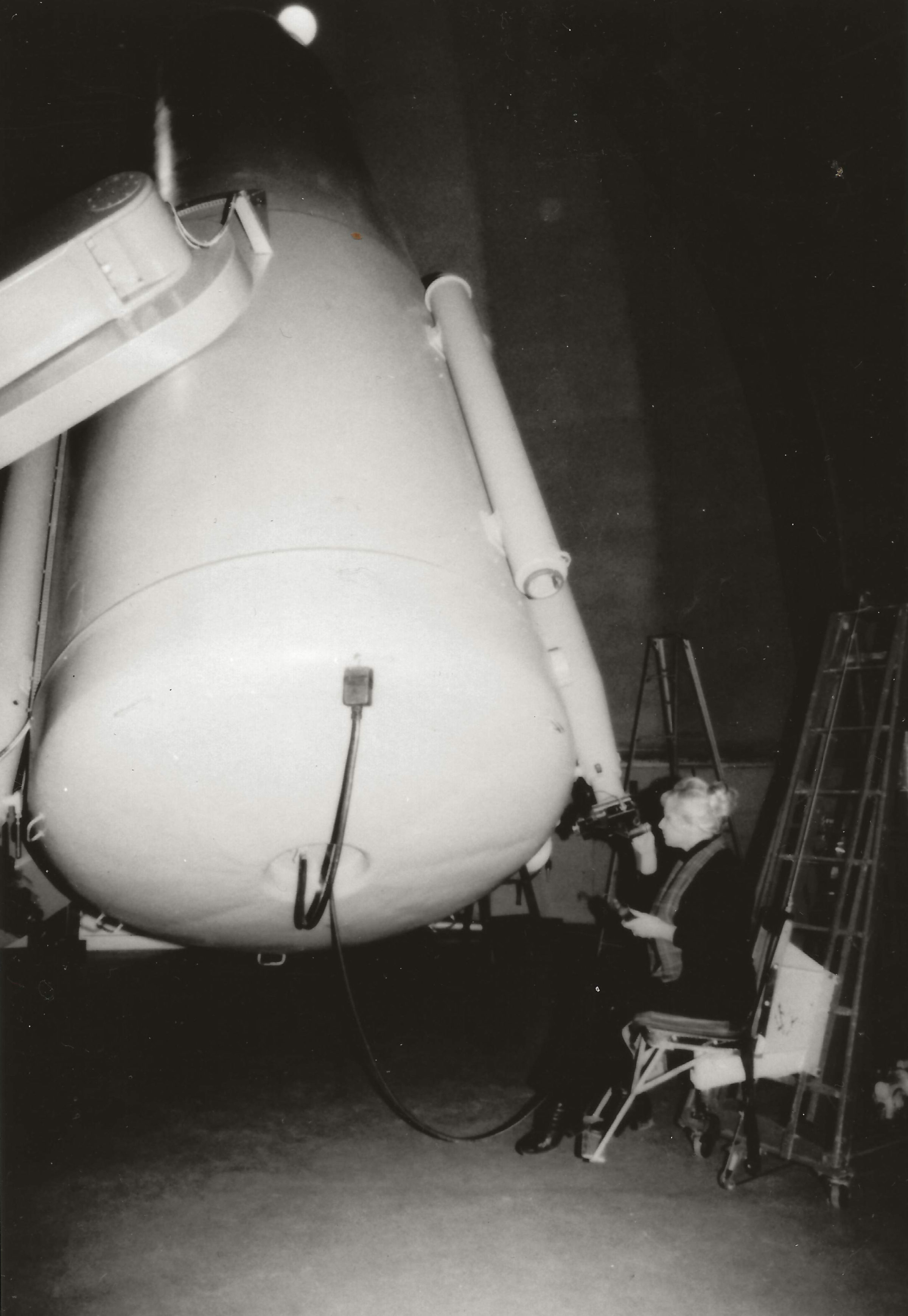
The God of Chaos
On April 13, 2029—Friday the 13th if you’re superstitious—a new point of light will appear in Earth’s night sky. Looking like a moderately bright star, the dot will be visible from Europe, Africa, and western Asia as it glides across the horizon.
The dot will be asteroid Apophis, named for the Egyptian god of chaos.
During its visit to Earth, Apophis will come as close as 30,600 kilometers (19,000 miles)—closer than our geostationary communications satellites, making it by far the closest-known flyby for an object of its size. The 450-meter-wide (1,500-foot-wide) asteroid won’t hit Earth, but if it did, the energy released would be comparable to a blast from tens to hundreds of nuclear weapons.
There is perhaps no better way to visualize the potential threat from near-Earth asteroids than to see with your own eyes one that could instigate a global catastrophe and possible civilizational collapse.
No missions to Apophis are currently scheduled, but with the flyby less than eight years away, NASA’s Lindley Johnson says now is the time to plan.
“It’s not too early to talk about these types of missions,” he says. “When you’re talking budget, you can’t just wait until an asteroid gets close to Earth.”
Late last year, a worldwide group of scientists and engineers participated in a virtual workshop titled “Apophis T–9 Years: Knowledge Opportunities for the Science of Planetary Defense.” Topics included the latest radar models of Apophis, analyses of how Earth’s gravity will strain the asteroid in 2029, and what science instruments an Apophis mission should carry.
The Planetary Society participated in the workshop and called for missions to study Apophis in its submission to the planetary science decadal survey, a community-authored report that helps NASA plan its next 10 years of space missions.
The Apophis flyby is the perfect chance to show the cosmos how far Earthlings have come since the dinosaurs.
Whether or not the world will rise to the challenge remains to be seen.
The Planetary Report • June Solstice
Help advance space science and exploration! Become a member of The Planetary Society and you'll receive the full PDF and print versions of The Planetary Report.


 Explore Worlds
Explore Worlds Find Life
Find Life Defend Earth
Defend Earth


